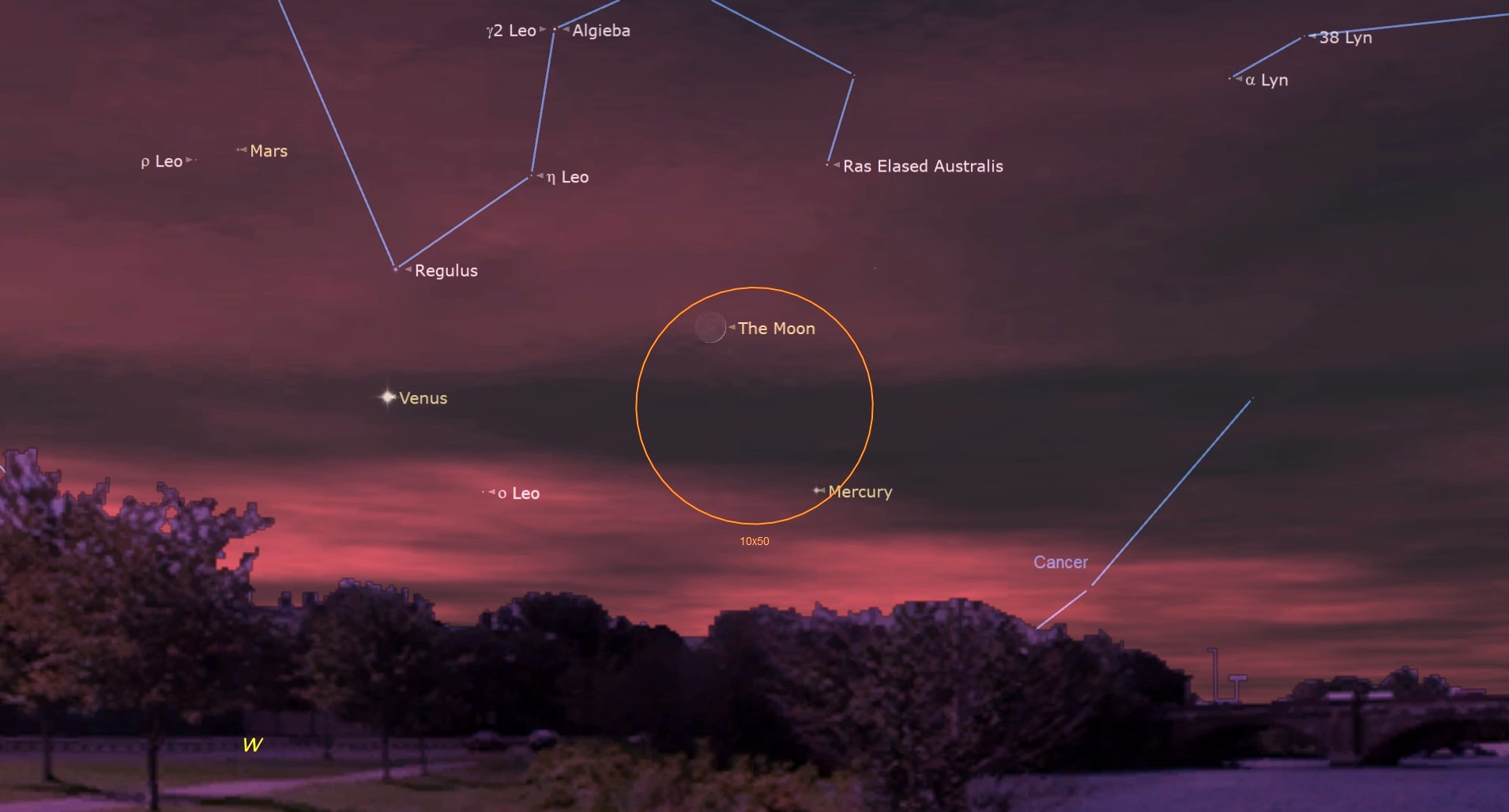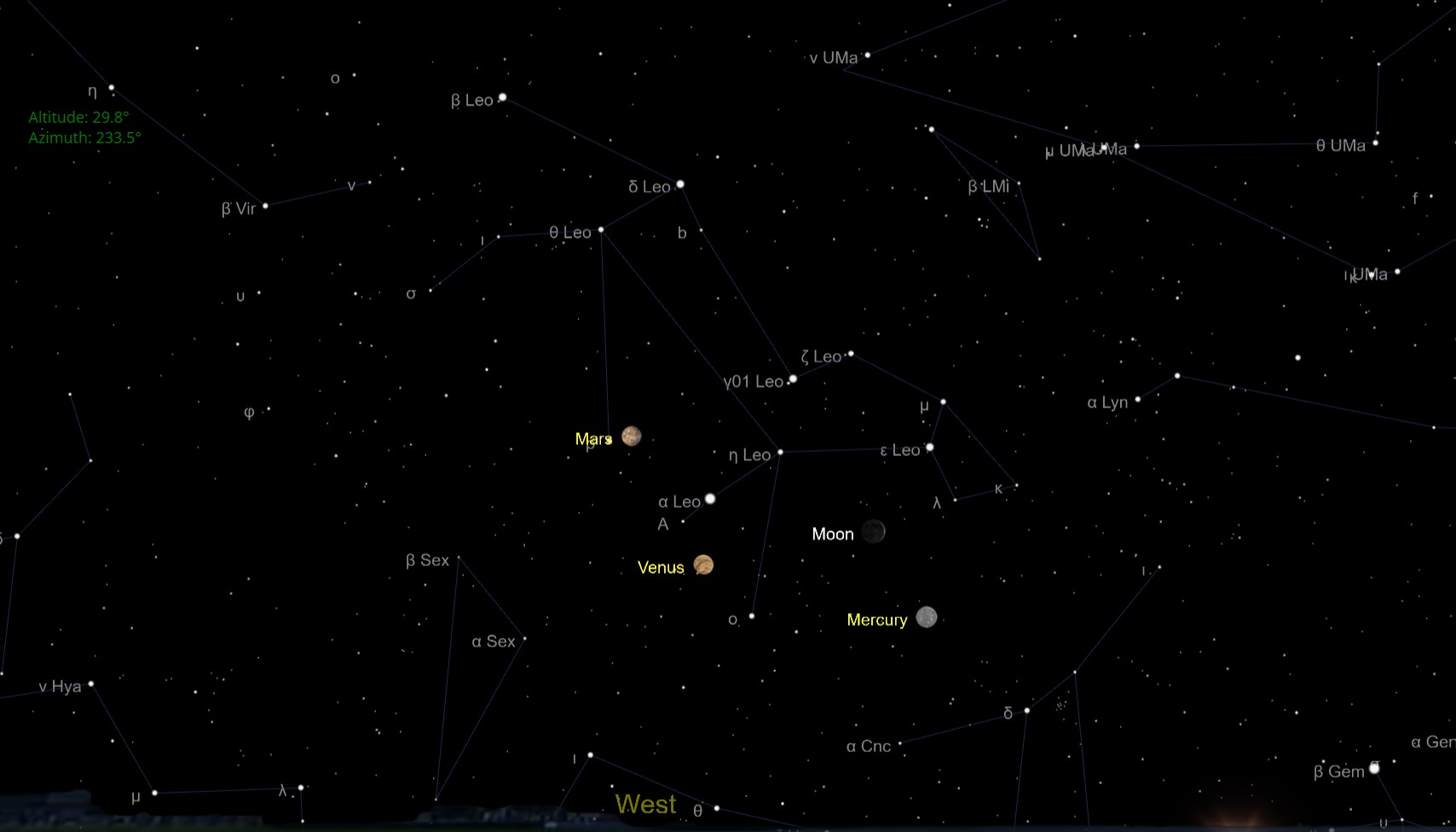You can see Mars, Venus and Mercury near the crescent moon tonight. Here's where to look.

Hopefully the skies in your area are clear tonight (July 19), because there will be an excellent grouping of celestial bodies shortly after sunset.
While smoke from Canadian wildfires continues to create hazy skies in many parts of North America, the moon, Mercury, Venus and Mars are forging ahead with their planned night sky party tonight. Just after sunset, the faintest sliver of a two-day-old crescent moon will be low in the western sky. Joining it will be three of the solar system's inner planets, not far from one another in the sky in the Leo constellation, the Lion.
From New York City, the quartet should appear to the west just as the skies begin to darken at sunset. Note that the three planets and the moon will already be fairly low in the sky by the time it gets dark, so you'll need to have a decent view of the horizon to make the most of this skywatching opportunity.
Related: Night sky, July 2023: What you can see tonight [maps]

Looking for a telescope for the solar system planets? We recommend the Celestron Astro Fi 102 as the top pick in our best beginner's telescope guide.
Venus will be the brightest of these four objects and thus will appear first in the evening twilight. Find the moon roughly a fist's width at arm's length to the right of and slightly above Venus.
Go in the opposite direction from Venus — above and to the left — to see the steady glow of red-orange Mars.
Mercury will be far dimmer and more difficult to locate; it will be roughly a palm's width below and to the right of the moon. You will need a telescope to see Mercury, shining as bright as some stars at magnitude -0.45.
Breaking space news, the latest updates on rocket launches, skywatching events and more!
The four bodies will be in the Leo constellation, making this a good opportunity to familiarize yourself with the stars of this popular night sky sight. The moon will be underneath the Lion's jaw, while Venus will be located between its front legs. Mars will be just beside one of its rear feet.
On Thursday (July 20), Mars will move even closer to the moon. Head outside around the same time on the following two nights and look to the west to watch the cosmic dance of these summer skywatching favorites.
If you are hoping to catch a closer look at the planets, the moon or anything else in the night sky, our guides to the best telescopes and best binoculars are a great place to start.
And if you want to try your hand at photographing the moon and/or the planets, check out our guides on how to photograph the moon, what equipment you need to see and photograph the planets, as well as our best cameras for astrophotography and best lenses for astrophotography.
Editor's Note: If you snap an image of the moon beside Mars, Venus and Mercury and would like to share it with Space.com's readers, send your photo(s), comments, and your name and location to spacephotos@space.com.

Brett is curious about emerging aerospace technologies, alternative launch concepts, military space developments and uncrewed aircraft systems. Brett's work has appeared on Scientific American, The War Zone, Popular Science, the History Channel, Science Discovery and more. Brett has English degrees from Clemson University and the University of North Carolina at Charlotte. In his free time, Brett enjoys skywatching throughout the dark skies of the Appalachian mountains.

